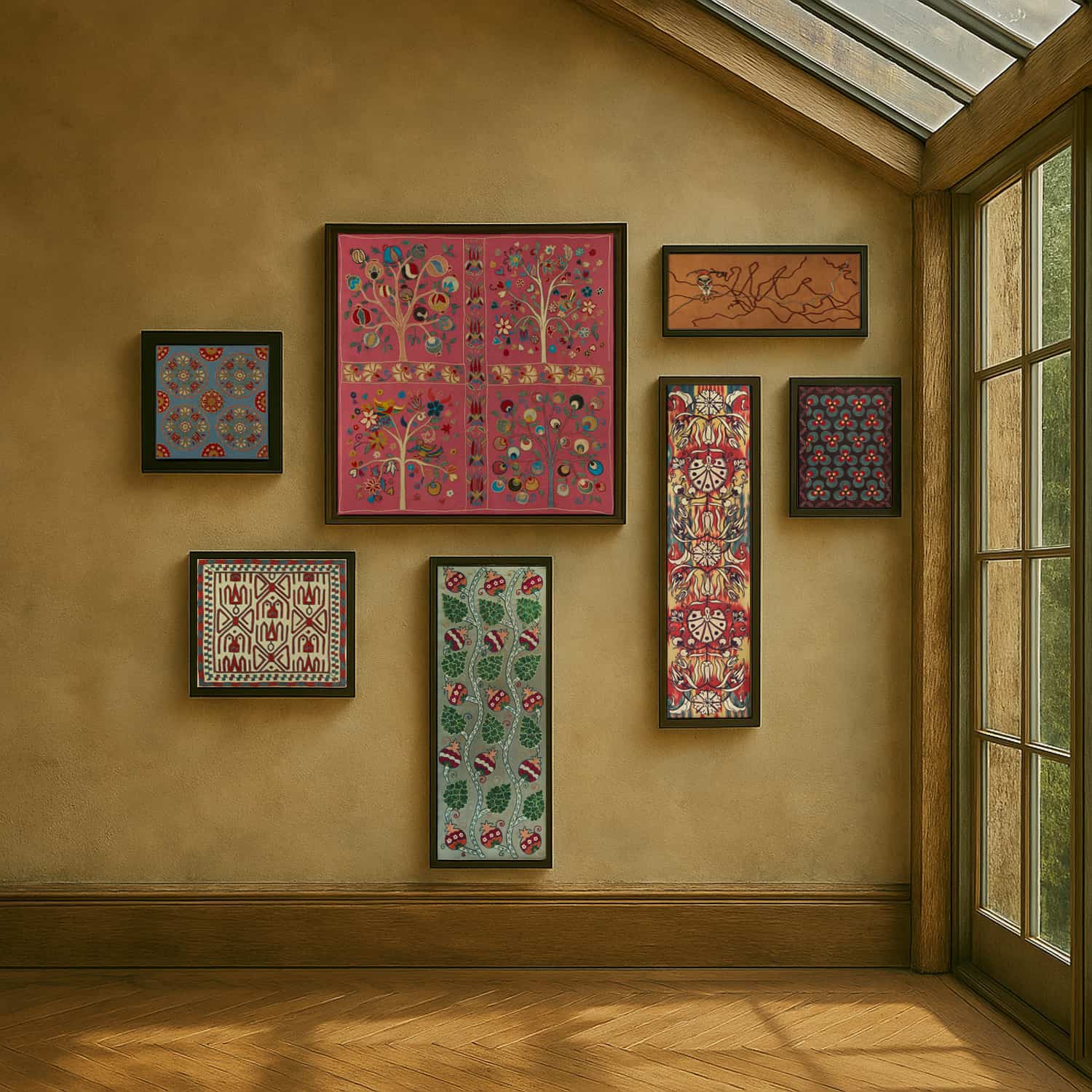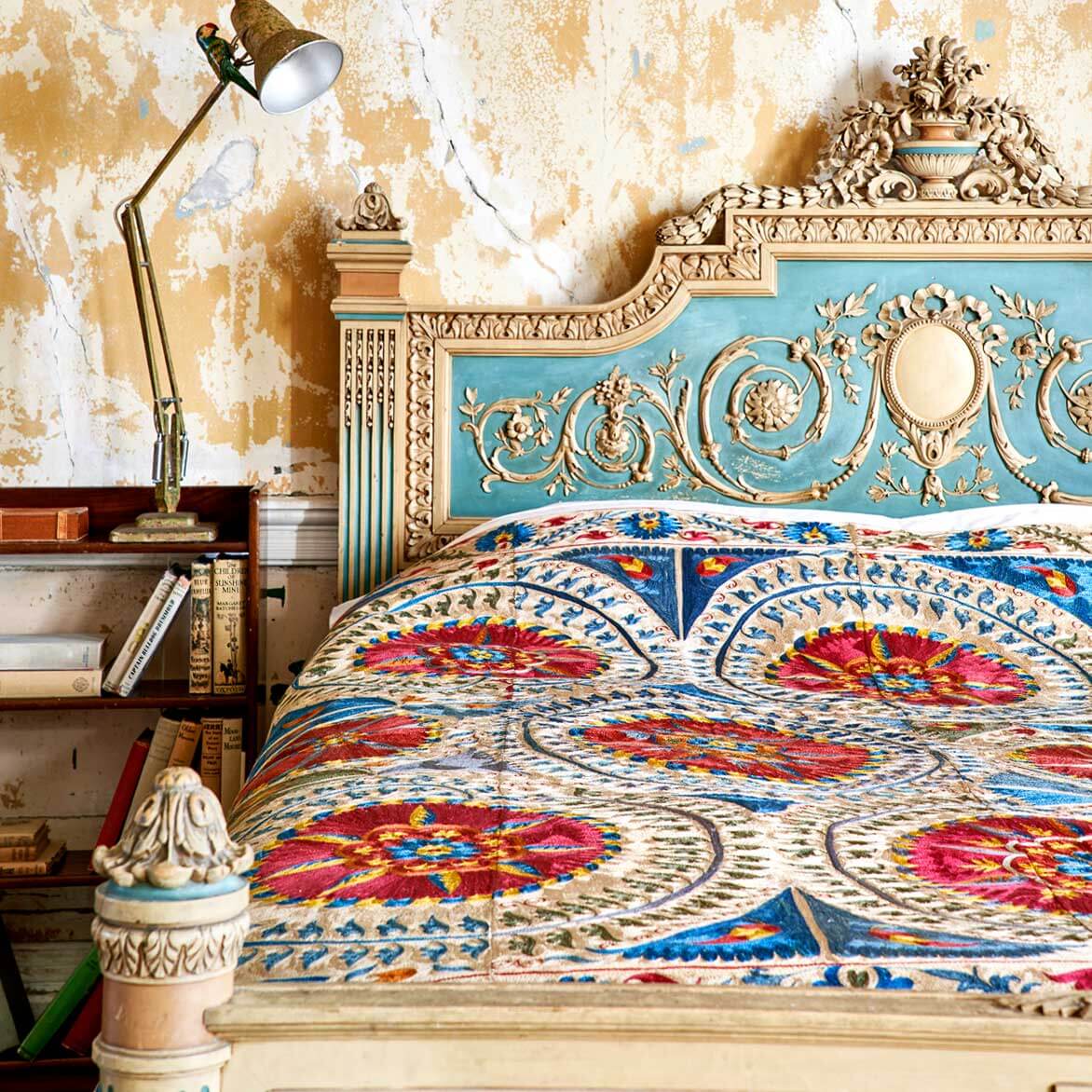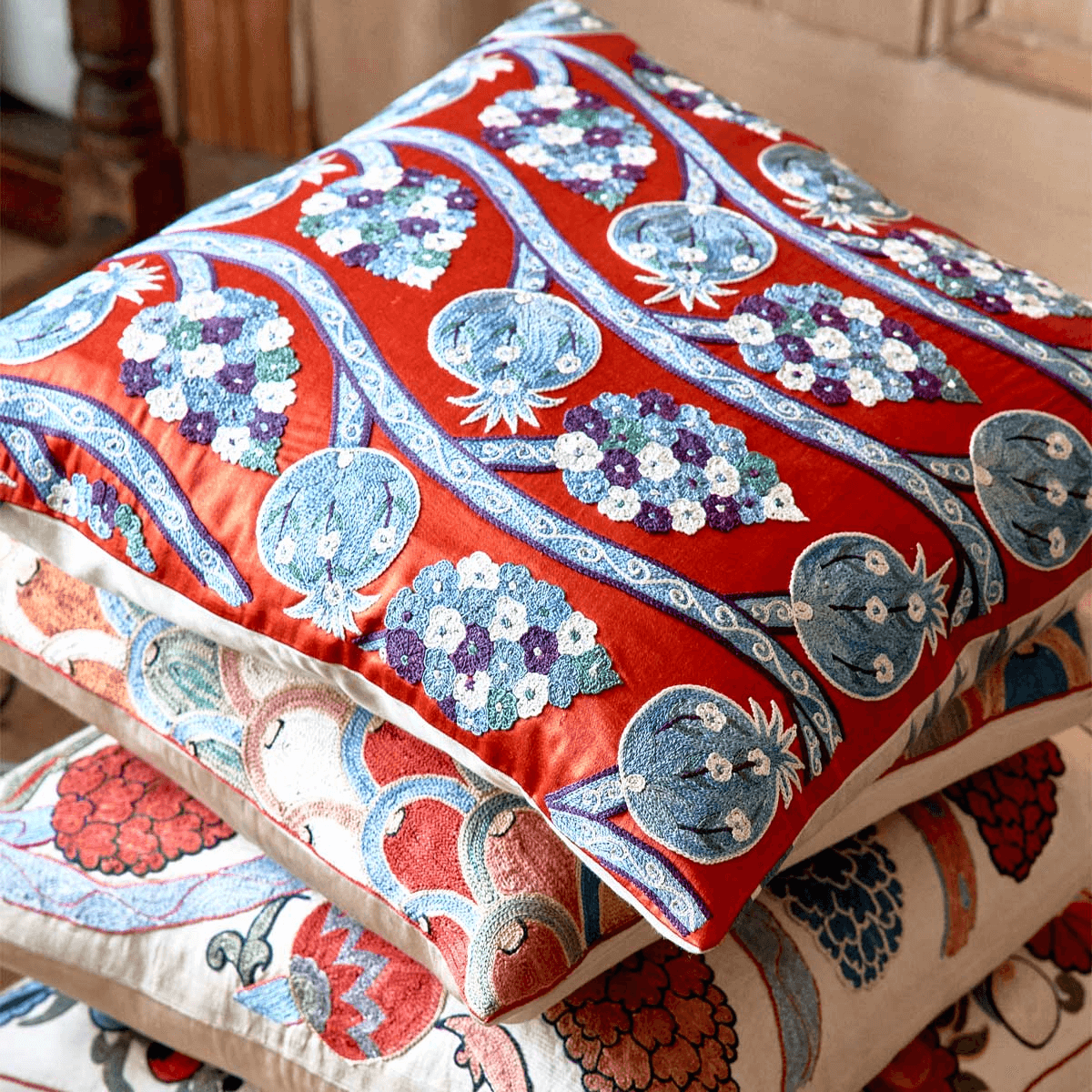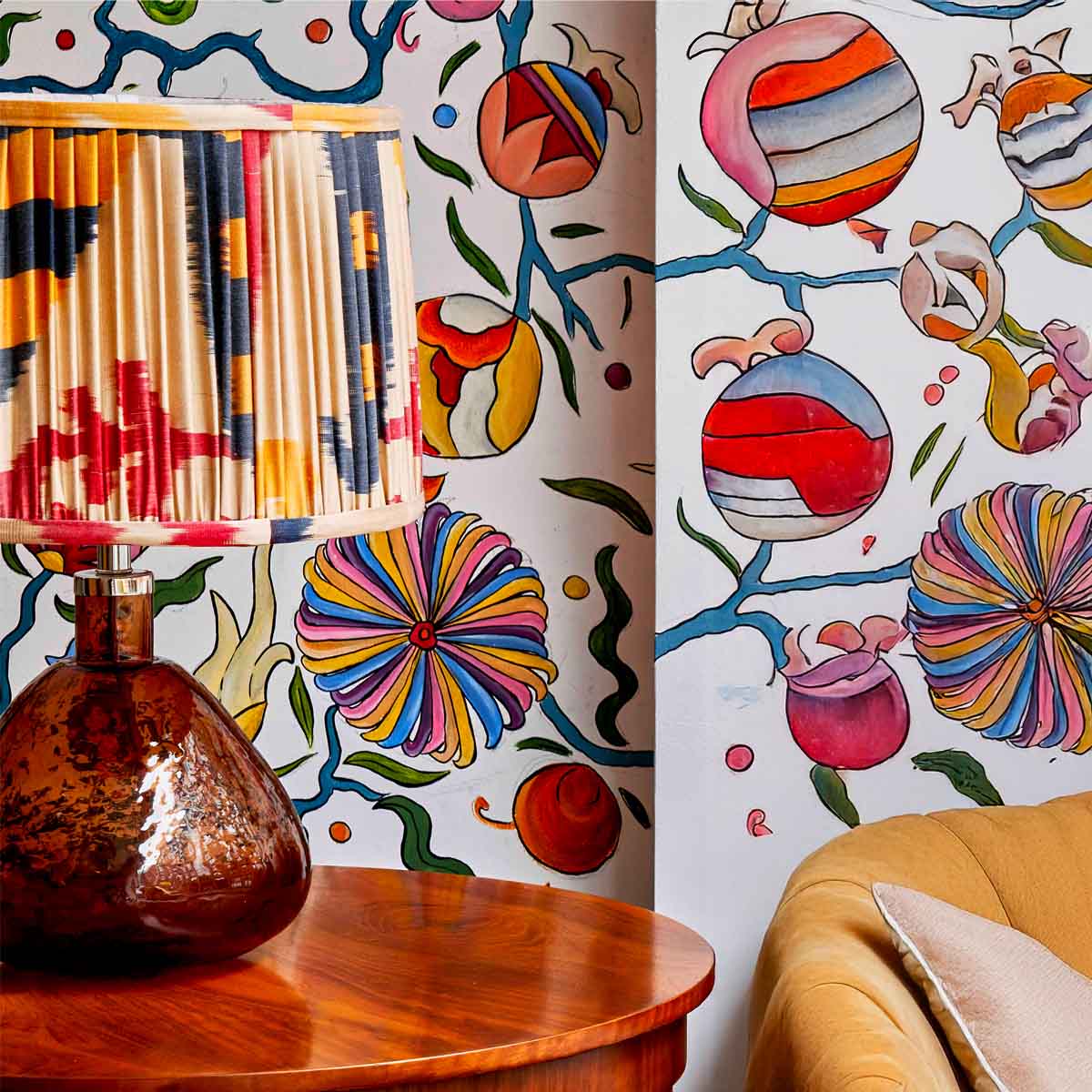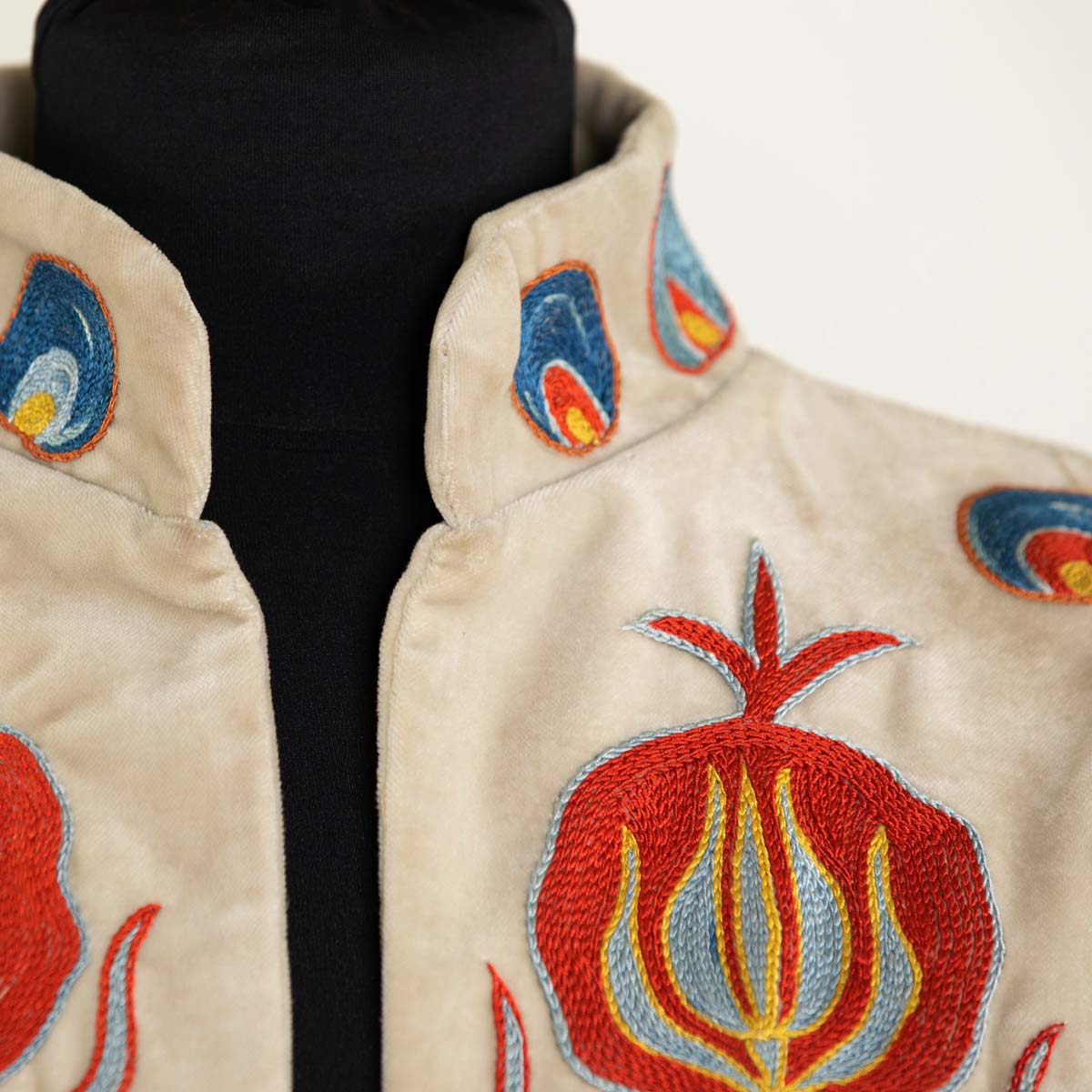Craftsmanship: The Process of Hand-Embroidered Silk
Making begins before the first mark is drawn. Our process of hand embroidery does not start with the surface, but with direction. What will follow is already present. A movement shaped by restraint, a structure formed through judgement. The surface is not where the work begins. It is where it arrives as a finished silk textile, made by hand.
Each stage carries forward what came before it. Line becomes structure. Stitch becomes weight. Nothing stands apart. Through construction, shape emerges. This is how it holds.
Research and Visual Reference
Each composition begins in research. Historical references are studied for proportion, spacing, and how form moves across ground. Some spiral outward, like the borders of sixteenth-century Ottoman tiles. Others reflect in symmetry. The stance of Horus. The pairing of domes. The spatial reasoning of early gardens.
From within these systems, specific motifs return. The tulip and the saz leaf. The split palmette. The rosette. The cintemani. Not included for symbolism, but for how they order space. Studied for how they centre, divide, hold. In Mekhann’s collection, such forms are absorbed, not displayed. Their logic is retained and adjusted through interval, spacing, and proportion.
The elibelinde, drawn from Anatolian textile language, balances through mirrored abstraction. The Tree of Life, extended vertically, arranges upward movement without narration. Botanical systems become graphic reasoning. Branches are mirrored. Stems aligned. What remains is traced again by hand. It is prepared to support what follows.
Compositional Drawing
Drawings are developed by hand. The pace is steady, directed by focus. Each mark is refined to anticipate how the needle will pass.
Compositions are built with embroidery in mind. Some hold as single elements. Others are drawn to repeat, mirror or progress in sequence. The form and flow of the piece begin here, anchored by the drawing itself.
Material Logic: Silk & Dye
Silk is chosen for how it behaves. It holds tension, receives colour, and settles into stillness.
Threads are dyed in small batches using plant-based sources. Indigo, madder, walnut, pomegranate. Colour shifts with each composition. Some require muted tone. Others depend on contrast to anchor the field. Colour enters early. It binds the draft and supports the pattern it is meant to carry.
Once dyed, the silk is woven by hand. The grain remains close. The cloth holds firm. It is not embellishment. It is ground.
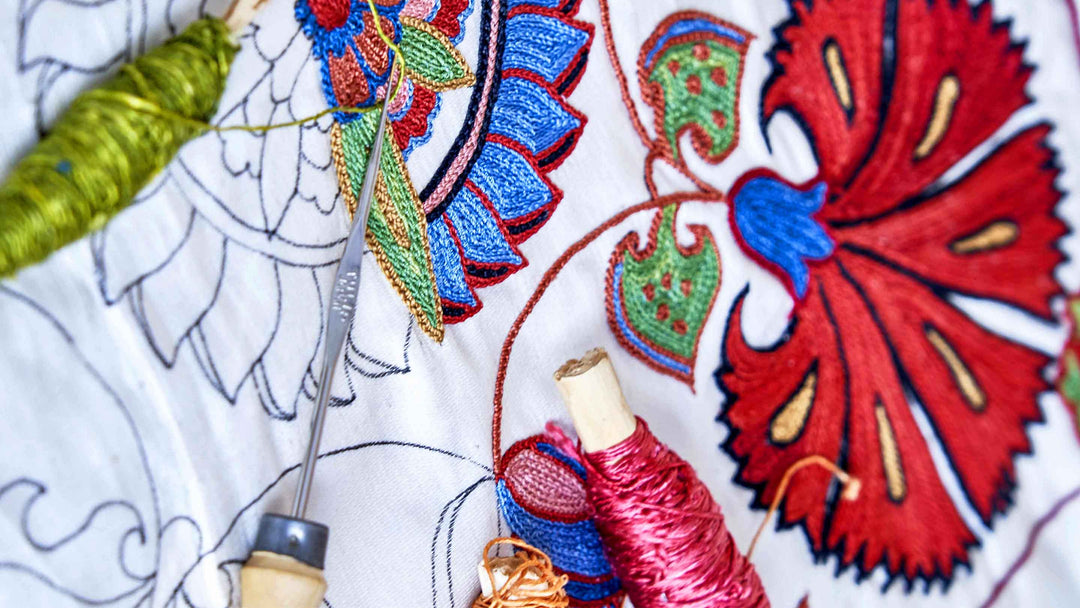

Preparation and Setup
Once the drawing is complete, the groundwork begins.
The silk is stretched and held under even tension. Forms are transferred by hand, kept visible but light. Threads are chosen by tone, by thickness, by how they behave on the grain. Their placement follows the plan already resolved judged in intervals, never for effect.
What the draft defines, the setup honours. Nothing is placed to catch the eye. This is the pause before motion. The moment before the stitched surface begins to emerge.
Embroidery by Hand
We work with one technique. Chain stitch. A single motion, placed by hand. Repeated with focus.
Each piece is completed by one artisan. The needle follows the path with steady focus. Some compositions open into empty ground. Others return through patterned sequence. The embroidery builds gradually. Days stretch into weeks. Sometimes longer. The pace holds to what the form requires.
This is where the material gains density. Where motion takes hold. Where thread sets the design into fabric with measured clarity.
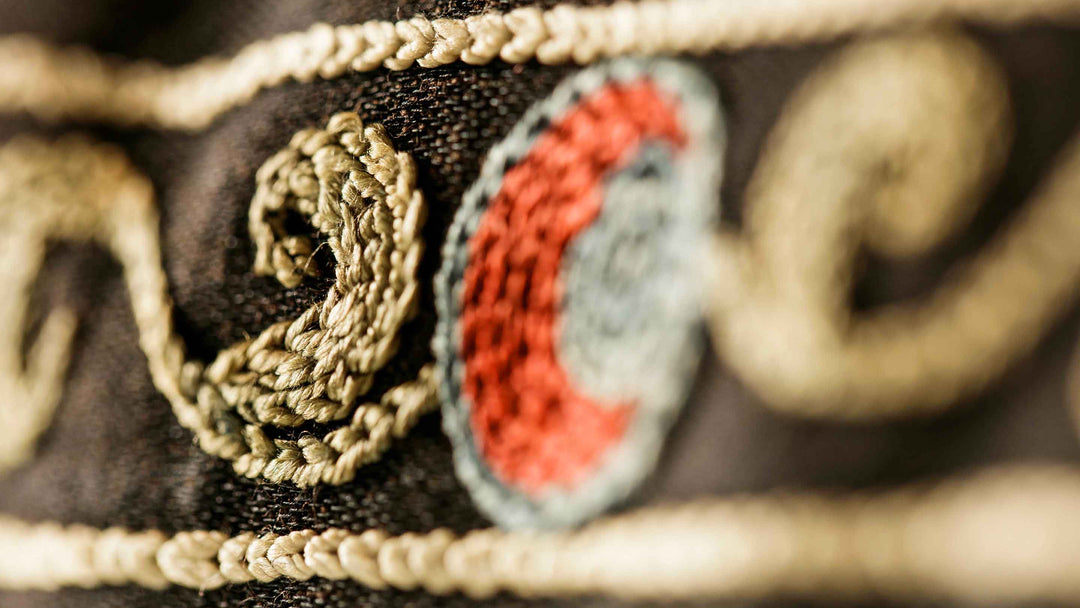
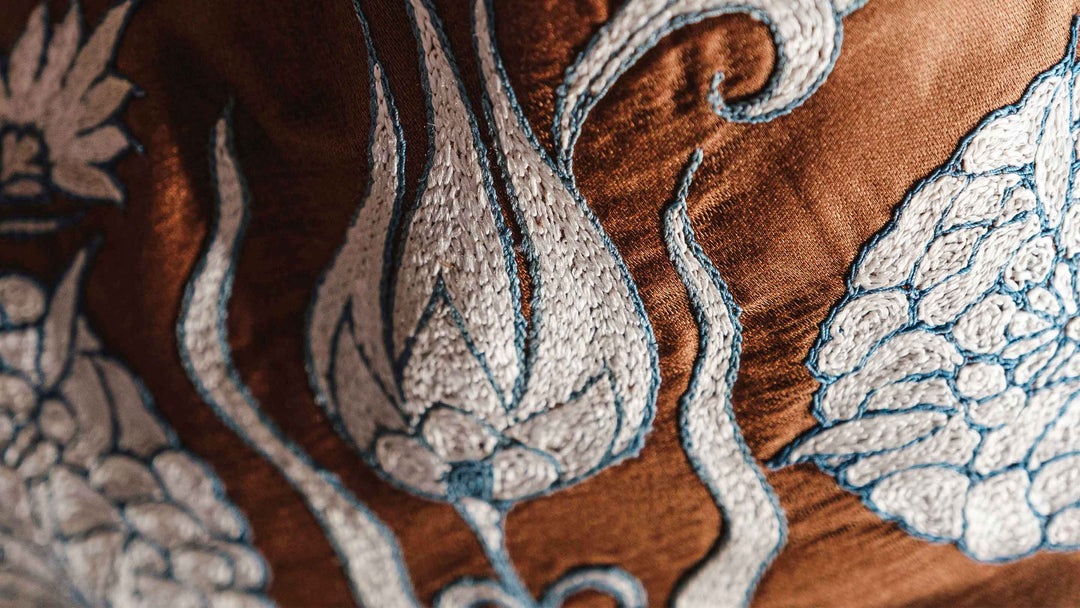
Textile in Place
When the embroidery is complete, the piece returns to its framework.
Edges are closed. Threads are checked. The cloth is reviewed for tension, proportion, and coherence. The original intent must still translate. The form must stay true.
Some pieces stand alone. Others are part of a series joined by mirrored layout, scaled pairing, or internal pacing. Together they build a system. One based on contrast, restraint, and relation.
Each piece belongs within a larger logic. Once complete, it finds its place - on a wall, across a table, beside a bed, within a room. Some settle quietly. Others shift the tone of a room.
